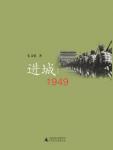Chapter 1 preamble
Understanding 1949 is much more difficult than one might imagine.
The rapid collapse of the Kuomintang also caused the Communist Party to lose more opportunities to temper and learn in time. The complex reality faced by the Communist Party in 1949 could not be simply reduced to any single model, and the challenges they had to face in management were unimaginable.This is not just about managing a border region or a base area, but about managing a large country three times the size of Western Europe and containing nearly a quarter of the world's population.
In modern China, the voice of republic and unification is the most deeply rooted in the hearts of the people, but the root cause of the warlords' separatism - the weakness of central political and financial power has not been changed, and, for many years, the experience of managing a large country has been very unfamiliar .
In the imperial era of China, the national financial scale was only a small part of the entire national economy, and government revenue never exceeded 4% of GDP.The rise of local military forces in the late Qing Dynasty temporarily resolved the "military crisis" of the central government, but produced an economic system that was out of the central financial control. It had a profound impact on modern China.In fact, after the fall of the Qing Dynasty, the share of national income extracted by the government was still very small. During the period from 1916 to 1928, China did not have a national financial system at all, and the maintenance of the Beiyang government mainly relied on various domestic and foreign loans.After the Kuomintang came to power, despite painstaking efforts to transform the fiscal system, 1936 was probably the best year for the national government, and the entire government’s revenue was only 8.8% of GDP.This is also an important reason why the Nanjing Central Government presided over by Chiang Kai-shek failed to implement the "National Building Strategy" that had not been completed after the death of Sun Yat-sen in 1925. In 1949, the new regime's budgetary revenue accounted for an unprecedented proportion of more than 15% of national income.For the Communist Party that has just entered the city, this is destined to be an unprecedented pioneering experiment.
Also, the challenge of rebuilding the country's infrastructure is evident.In traditional China, the central government is not committed to managing ordinary villages or urban grassroots. To a certain extent, local power is acquiesced to local clans and guilds. In a vast agricultural area governed by only a thin layer of officials, In the empire, the latter was an indispensable supplement to the central government—in the 19th century, local governments in China relied on the ingenious balance between prefectural officials and local civil forces.And when the central government collapsed, the balance that had been maintained for centuries was clearly disrupted.The center has lost the ability to control such local organizations.As local organizations became stronger, competition among organizations emerged, and power was inevitably concentrated in the hands of warlords who relied on military discourse.The leaders of the 1911 Revolution failed to establish a new political order, let alone actually control the country.In a short-lived national experiment, the Kuomintang unified the central government, expanded the functions of local governments, and appealed to the Three People's Principles sentiment. After the initial military unification, they tried to launch extensive reforms, but precisely because of the lack of independent With the support of financial and complete national and local grassroots, they have suffered failures, and the Kuomintang has actually benefited from and is subject to powerful capital and warlords. Before 1949, the Communist Party of China gained unprecedented experience in establishing grassroots political power through its work in the countryside for many years. But can this system be successfully introduced into the cities? The vitality of the new order, in early 1949, was still an unknown.
This book selects six cities as observation samples for the takeover and transformation of the new regime. This is a precedent for research on the history of the founding of the People’s Republic of China. Therefore, there must be a lot of room for further discussion in terms of narrative methods and research methods.
I can't define this book as a historical work or a news work. It interviewed as many as 69 historical parties, some of them were the core team members involved in the "founding of the country", and some of them were industry veterans who witnessed historical changes. Most of them have passed their old age, recalling the past is the wealth left to future generations.I would like to give special thanks to these seniors and extend my heartfelt respect.I think that this book uses the method of news to observe history, discover history, and fill in the gaps in the existing narrative of history.
I uphold such a basic value, news is history, history is news.We retell history to find the "five W's" in history, to conduct news interviews with historical parties, and to abandon reliance on existing historical materials, and get rid of reliance on the discourse system and discovery system of the past historical system.The formation of this book has benefited from a series of interviews and writing under the pressure of deadlines, from the "Sanlian Life Weekly" where I worked, and from the exploration and accumulation of this magazine since the series of reports on the Anti-Japanese War several years ago. In a sense, it is one of the results of various news operations and method explorations being carried out by all members of Sanlian Life Weekly.Without a medium of open-mindedness and intellectual excellence, and without a group of colleagues who love the profession, this book would never have been published.

